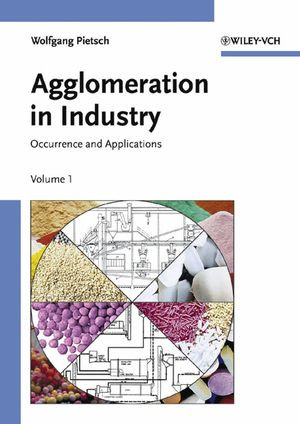Product desciption
Agglomeration Set Wolfgang Pietsch by Wolfgang Pietsch 9783527313006, 9783527619788, 3527313001, 352761978X instant download after payment.
Agglomeration is integral to the processes of modification of powders, production of composites and creation of new materials which are required in pharmaceuticals, foods, chemicals, fertilizers and agrochemicals, minerals, ceramics, metallurgy and all material producing industries. The binding mechanisms and the particle behavior as well as the characteristics of the processes and the resulting agglomerates are the same whether they are occurring in the 'ultra-clean' pharmaceutical or food industries or in 'dirty' minerals or waste processing plants.
The work is a complete and up-to-date practical guide describing the various agglomeration phenomena and industrial techniques for size enlargement. In addition to introducing the properties of agglomerates and the characteristics of the different methods, descriptions of the machinery and discussions of specific equipment features are the main topics. Furthermore, the book emphasizes recent developments at the level of single particles and applications of agglomeration phenomena in nanotechnology.
The detailed evaluation of the subject is based on the authors experience as student, researcher, teacher, developer, designer, vendor, and user as well as expert and consultant in the field of agglomeration, its technologies and products, and is complemented by the know-how of colleagues who are active in specific areas and information from vendors. It is intended for everybody working in industries that process and handle particulate solids as it aims to help understand and control unwanted agglomeration as well as use, improve, and develop methods for the beneficial size enlargement by agglomeration.
Content:
Chapter 1 Introduction (pages 1–2):
Chapter 2 A Short History of Agglomeration (pages 3–4):
Chapter 3 Agglomeration as a Generic, Independent, and Interdisciplinary Field of Science (pages 5–10):
Chapter 4 Glossary of Agglomeration Terms (pages 11–28):
Chapter 5 Agglomeration Theories (pages 29–132):
Chapter 6 Agglomeration Technologies (pages 133–138):
Chapter 7 Tumble/Growth Agglomeration (pages 139–228):
Chapter 8 Pressure Agglomeration (pages 229–384):
Chapter 9 Agglomeration by Heat/Sintering (pages 385–408):
Chapter 10 Special Technologies Using the Binding Mechanisms of Agglomeration (pages 409–452):
Chapter 11 Engineering Criteria, Development, and Plant Design (pages 453–506):
Chapter 12 Outlook (pages 507–523):
Chapter 1 Introduction (pages 1–2):
Chapter 2 Agglomeration as a Generic, Independent, and Interdisciplinary Field of Science (pages 3–6):
Chapter 3 Agglomeration Fundamentals (pages 7–21):
Chapter 4 Undesired Agglomeration:Methods of Avoiding or Lessening its Effect (pages 23–36):
Chapter 5 Beneficial Uses of Agglomeration:Agglomeration Technologies and Methods (pages 37–58):
Chapter 6 Industrial Applications of Size Enlargement by Agglomeration (pages 59–478):
Chapter 7 Powder Metallurgy (pages 479–483):
Chapter 8 Applications in Environmental Control (pages 485–539):
Chapter 9 Development of Industrial Applications (pages 541–588):
Chapter 10 Optimization and Troubleshooting of Agglomeration Systems (pages 589–631):
Chapter 11 Applications of Agglomeration Phenomena for Single Particles and in Nanotechnologies (pages 633–653):
Chapter 12 Outlook (pages 655–659):
Chapter 13 Bibliography (pages 661–691):
Chapter 14 Glossary of Application?Related Terms Associated with Agglomeration (pages 693–719):


